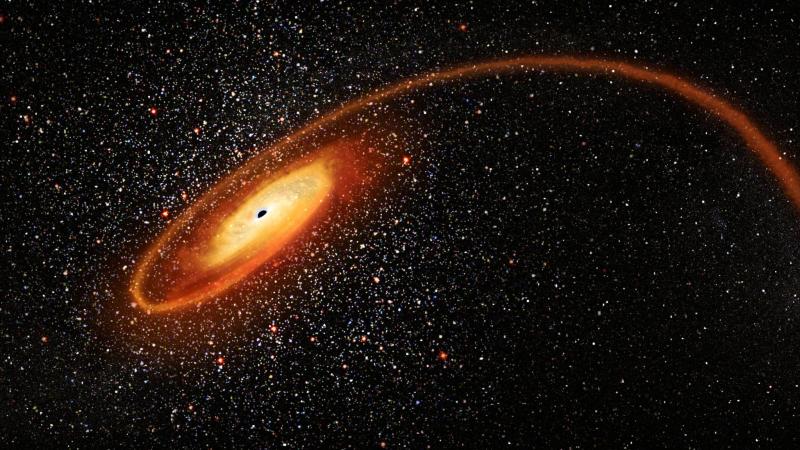Astronomers have discovered a black hole in the constellation Aquila, located only 1,924 light-years from the solar system. They stated that the object named Gaia BH3, or BH3, is the largest stellar black hole discovered in the Milky Way, with a mass 33 times that of the sun, and it is the second closest black hole to our planet. BH3 does not pose any threat at all, especially since its gravitational field is not stronger than that of a star with an equivalent mass.
Astronomer Pasquale Panuzzo from the National Center for Scientific Research (CNRS) in France and the primary author of this research paper said, "No one expected to find a massive black hole lurking nearby, and it had not been discovered until now." Black holes are categorized into different mass classes, with supermassive black holes that can have masses millions to billions of times that of the sun, usually found at the centers of galaxies. Smaller stellar black holes form from the collapse of stellar cores when massive stars explode into supernovae. Their masses can reach about 65 times that of the sun.
Estimates suggest that the number of stellar-mass black holes in the Milky Way could be up to 100 million, but they are not easy to detect, particularly since they do not emit any light. There are several methods to detect dormant stellar-mass black holes; one involves not the black hole itself but any companion stars in close orbits that are gravitationally linked to the black hole. This is what the Gaia spacecraft, operational in space since 2013, achieved by discovering BH3 through mapping the three-dimensional positions and motions of stars in the Milky Way with unprecedented accuracy.




